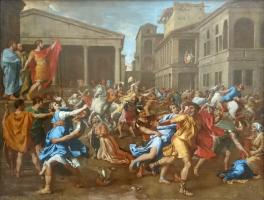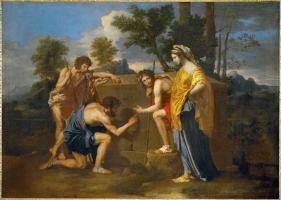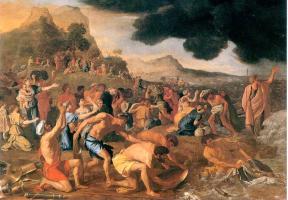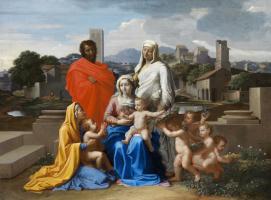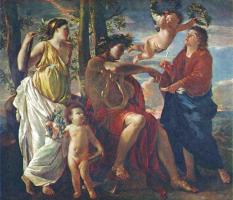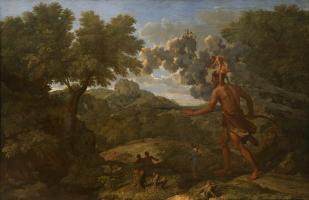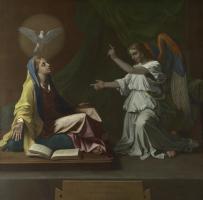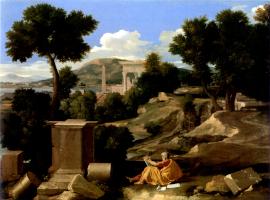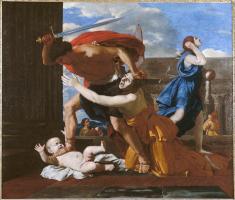Nicholas Poussin
The greatest of French seventeenth- century painters was Nicolas Poussin. He amplified and passed on the classical artistic tradition, frequently using the themes of Greek myth and legend as his subjects. He believed that painting should appeal more to the mind than the eye. He was a painter of ideas, an artist who praised the rational rather than the intuitive, who sought to impose order rather than reflect chaos. To this end, form and composition are paramount, emotion subordinate. His paintings are smooth, highly finished and controlled; and this very discipline led paradoxically to a kind of visual poetry.
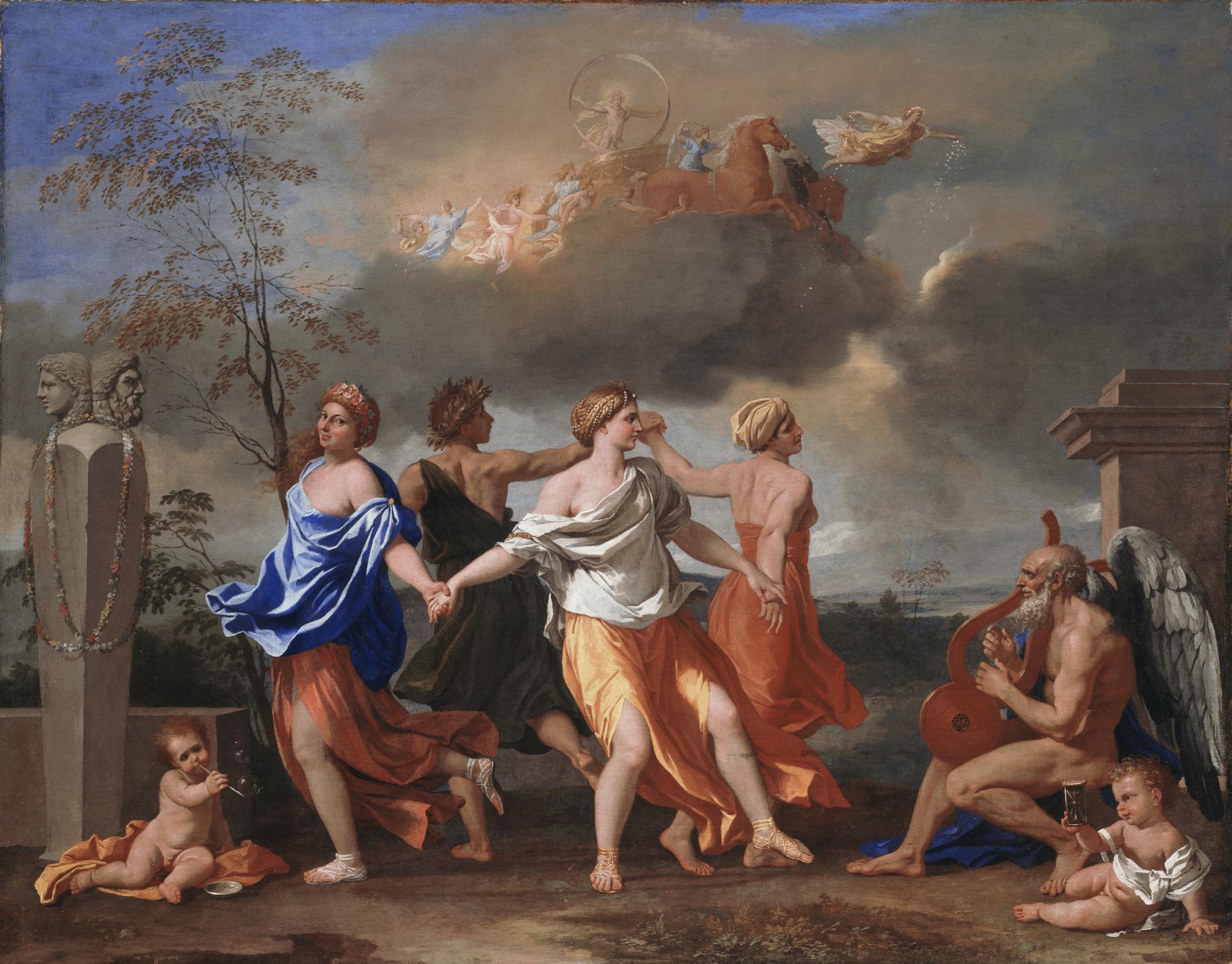 Poussin spent most of his life in Rome, and A Dance to the Music of Time was
painted for Cardinal Giulio Rospighosi, later Pope Clement IX. Its composition
is thought to be of the Cardinal’s own devising. In an idealized landscape
reminiscent of the country around Rome, four large — indeed hefty —
figures form a circle. They are dancing in a rather lumbering manner, and
looking towards the bearded, winged figure of Time, an old but muscular man
playing his lyre.
Poussin spent most of his life in Rome, and A Dance to the Music of Time was
painted for Cardinal Giulio Rospighosi, later Pope Clement IX. Its composition
is thought to be of the Cardinal’s own devising. In an idealized landscape
reminiscent of the country around Rome, four large — indeed hefty —
figures form a circle. They are dancing in a rather lumbering manner, and
looking towards the bearded, winged figure of Time, an old but muscular man
playing his lyre.
The dancing figures probably represent Pleasure (garlanded with roses), Wealth (with pearls entwined in her hair) and Poverty (wearing a simple white linen headdress). Wealth holds hands with Pleasure, but barely touches the hand of Poverty. The man with his back towards us is crowned with laurel, the victor’s wreath; perhaps he is Fame.
At Time’s feet a cherubic naked boy sits contemplating the sand running through an hour-glass; balancing him on the left another boy blows soap bubbles. Both infants represent change and fragility: what could be shorter-lived than a soap bubble, what more evocative of time running out than an hour-glass? The stone column on the left bears the double head of youth and age.
This splendid earthbound scene is crowned by a fabulous group in the sky. Borne upon sunlit grey clouds, Apollo the Sun God rides in his golden chariot, drawn by four powerful horses. He is escorted by dancing maidens representing the Hours, or maybe the Seasons. Leading the way is Aurora, goddess of the Dawn and sister to the Sun God, scattering flowers as she banishes Night.
The circular form of the dance itself implies a never-ending cycle, echoed by Apollo’s journey through the air as the sun crosses the sky. It is a powerful allegory of the ceaseless ebb and flow of human history, in which the dancers represent the quality of human life, and the rise and fall of fortune is in the hands of Time.
 In the mid-1630s, Poussin explored the work of Raphael, Roman
architecture, and Latin books on moral conduct. From these he adopted the pure,
classical idiom that he used for the rest of his life. Et in Arcadia ego is
also known as Les bergers d’Arcadie or The Arcadian Shepherds. This
idealized pastoral scene depicts people dressed in the garments of classical
antiquity and a woman. They are all gathered around an austere tomb and are
reading an epigraphic inscription. This painting has a sculpted version —
a marble bas-relief as a part of Poussin’s tomb in Rome. The inscription Et in
Arcadia ego is a quotation from Latin poet Virgil. Poussin reminds us that
there is no escape from death, even in the perfect world of Arcadia.
In the mid-1630s, Poussin explored the work of Raphael, Roman
architecture, and Latin books on moral conduct. From these he adopted the pure,
classical idiom that he used for the rest of his life. Et in Arcadia ego is
also known as Les bergers d’Arcadie or The Arcadian Shepherds. This
idealized pastoral scene depicts people dressed in the garments of classical
antiquity and a woman. They are all gathered around an austere tomb and are
reading an epigraphic inscription. This painting has a sculpted version —
a marble bas-relief as a part of Poussin’s tomb in Rome. The inscription Et in
Arcadia ego is a quotation from Latin poet Virgil. Poussin reminds us that
there is no escape from death, even in the perfect world of Arcadia.

